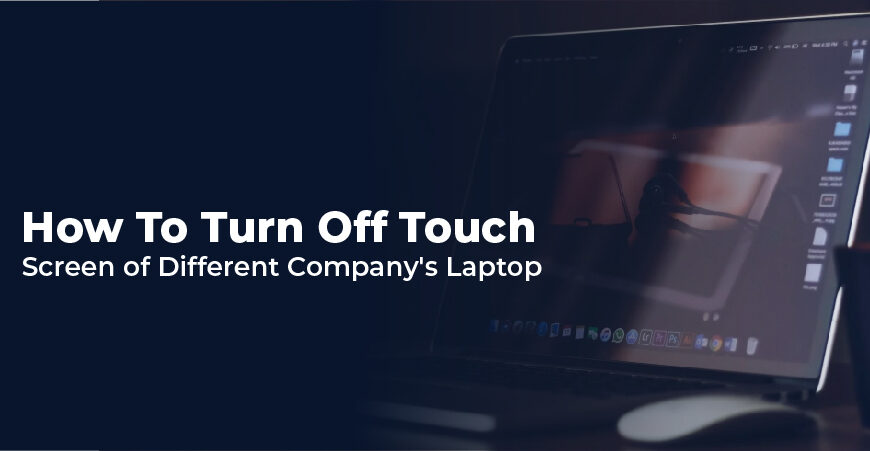It is convenient to use laptops with touch-enabled displays. Touch input simplifies navigation and optimizes your computer for touchscreen-friendly features and apps.
Touchscreens are a standard feature on touchscreen-enabled laptops and 2-in-1 tablets. Is it possible to disable the touch screen and use other input methods instead? Is the touch screen on your PC unstable or malfunctioning? It can be disabled until the problem is resolved.
Turn off Your HP, Dell, Lenovo Laptop Touch Screen
If you have a laptop that uses a touch screen, it’s important to know how to turn off the touch screen on Windows devices. You can use the Windows tools to turn off your touch screen. We will show you how to use these tools to turn off your laptop’s touch screen. The devices are touch-enabled and run the Windows 10 operating system.
We will also show you how to turn off the touch screen on an iPad. If you have an iPad, we will show you how to turn off the touch screen on an iPad. Windows 10 device with a touch screen You can turn off the touch screen on any Windows 10 device with a touch screen. This is the case for laptops as well as tablets.
Turn off Touch Screen via Device Manager
You can disable the driver powering your PC’s touch screen by disabling Device Manager, which is a system app that lets you manage hardware components on your Windows PC.
- Select Device Manager from the Quick Access Menu by pressing Windows + X or right-clicking the Start Menu icon.
- The Human Interface Devices category will expand.
- Select Disable device from the right-click menu of the touch screen that is HID-compliant. After selecting the driver, you can also click the black arrow heading down on the toolbar.
- Turn off your PC’s touch screen by selecting Yes on the confirmation prompt.
If more than one touch screen device appears in the Human Interface Devices section, disable them all to see if the touch screen of your PC turns off.
Tap the green arrow-up icon on the toolbar to re-enable the touch screen from the Device Manager. Alternatively, you can right-click the driver and select Enable device.
When your laptop’s display is the only input method, you shouldn’t turn off the touch screen. The touch screen won’t be re-enabled because it will be disabled. If you plan to turn off your computer’s touch screen, make sure you have another input device (external keyboard or mouse) handy.
Turn Off Touch Screen from the Registry Editor
The Windows Registry is the part of your PC’s operating system that stores essential hardware and software configuration files and settings. For example, you can disable your PC’s touch screen by creating a “kill switch” that disables touch input in the Registry.
This might sound a bit technical, but it’s easy. Besides, this technique will come in handy if your PC’s Device Manager isn’t working properly. Before showing you the steps, we strongly advise that you back up the Registry or create a System Restore Point. If you are experiencing a problem with your touch screen, this backup tool can help you restore missing or corrupt files and fix Registry errors.
- The Windows Run dialog box will appear when you press the Windows key + R. You can also right-click the Start Menu icon and select Run from the Quick Access menu.
- In the dialog box, type Regedit and press Enter or choose OK.
- Put Computer/HKEY_CURRENT_USER/Software/Microsoft/Wisp/Touch in the address bar of Registry Editor and press Enter.
- Select New from the context menu, then choose DWORD (32-bit) Value from the drop-down list.
- Enter the name TouchGate for the new Registry Value.
- TouchGate is clicked twice, the “Value date” must be set to zero, and OK is selected.
- The change takes effect when the computer is restarted.
- Go to the Computer/HKEY_CURRENT_USER/Software/Microsoft/Wisp/Touch folder, double-click TouchGate, and set the “Value date” to 1. Once you’ve restarted your computer, you should be able to use the touch screen again.
